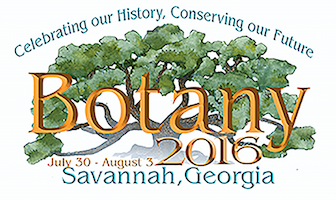| Abstract Detail
Ecology Huebner, Cynthia D. [1], McGill, David [2], Miller, Gary [1]. Comparison of Vegetation Composition in Response to Disturbance versus Local and Regional Physiography. Plant community composition is tied to regional (climate/soils) and local (aspect) physiography. Changes in initial floristic composition after a disturbance may be severe enough to change the successional trajectory predicted by physiography. Which is more important, disturbance or physiography, in determining vegetation composition?
We evaluated understory vegetation of plant communities exposed to 4 disturbances (control, single burn (SB), diameter-limit cut (DLC), and first-year shelterwood (SHW)) 3 years post-disturbance. Study sites were located within each disturbance type on northeast and southwest aspects within the Allegheny Plateau (AP) and the Ridge and Valley (RV) regions. Vegetation composition was analyzed using nonmetric-multidimensional scaling and 2-way nonparametric MANOVA.
Herbs/vines/shrubs composition differed by region and aspect; tree seedling composition differed only by region. Composition of herbs/vines/shrubs and trees differed by disturbance, but with a significant region interaction. Region and aspect were defined by several indicator species. No significant indicator species defined the controls. Four herbs/shrubs/vines (including Vaccinium stamineum and Epigaea repens) defined SB, 1 herb (Carex digitalis) and 1 tree (Betula sp.) defined DLC, and 9 herbs/shrubs/vines (including Rubus spp., Erechtites hieraciifolia, Phytolacca americana, and Verbascum thapsus) and 1 tree (Prunus pensylvanica) defined SHW. Epigaea repens C. digitalis V. thapsus were defined solely by disturbance. Though physiography was more important, some species served as disturbance indicators, differing by disturbance type.
As disturbance-indicator species replace regional-indicator species (Rubus spp.), successional trajectories may deviate towards recovery of native species that benefit from low-level disturbance (E. repens) or towards systems vulnerable to invasion by exotics (V. thapsus).
Log in to add this item to your schedule
1 - Northern Research Station, USDA Forest Service, 180 Canfield St., Morgantown, WV, 26505, USA
2 - West Virginia University, Forest Resources Management, Morgantown, WV, 26501, USA
Keywords:
none specified
Presentation Type: Oral Paper
Session: 15, Ecology Section: Forest Ecology
Location: 104/Savannah International Trade and Convention Center
Date: Tuesday, August 2nd, 2016
Time: 8:00 AM
Number: 15001
Abstract ID:159
Candidate for Awards:None |



